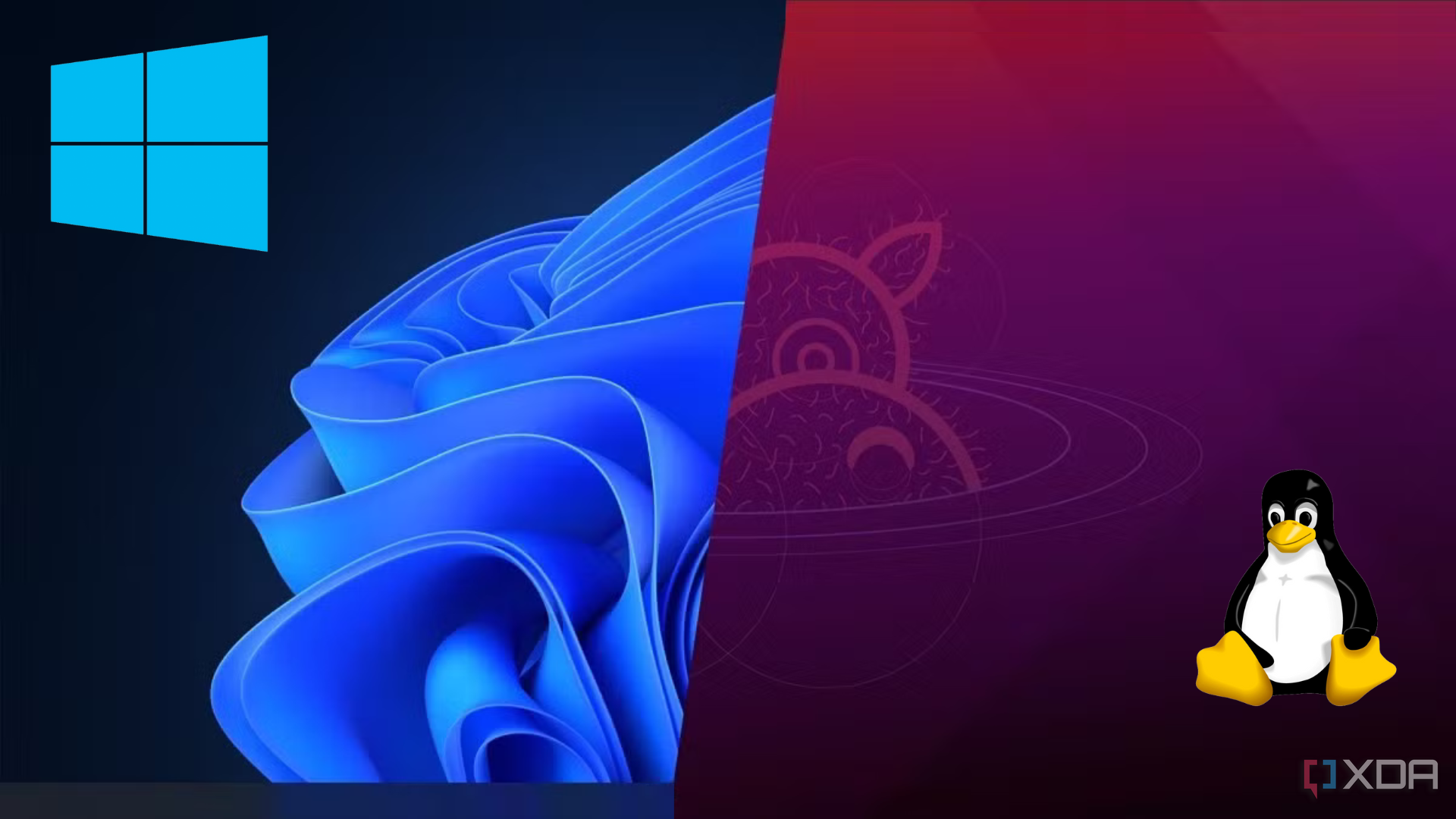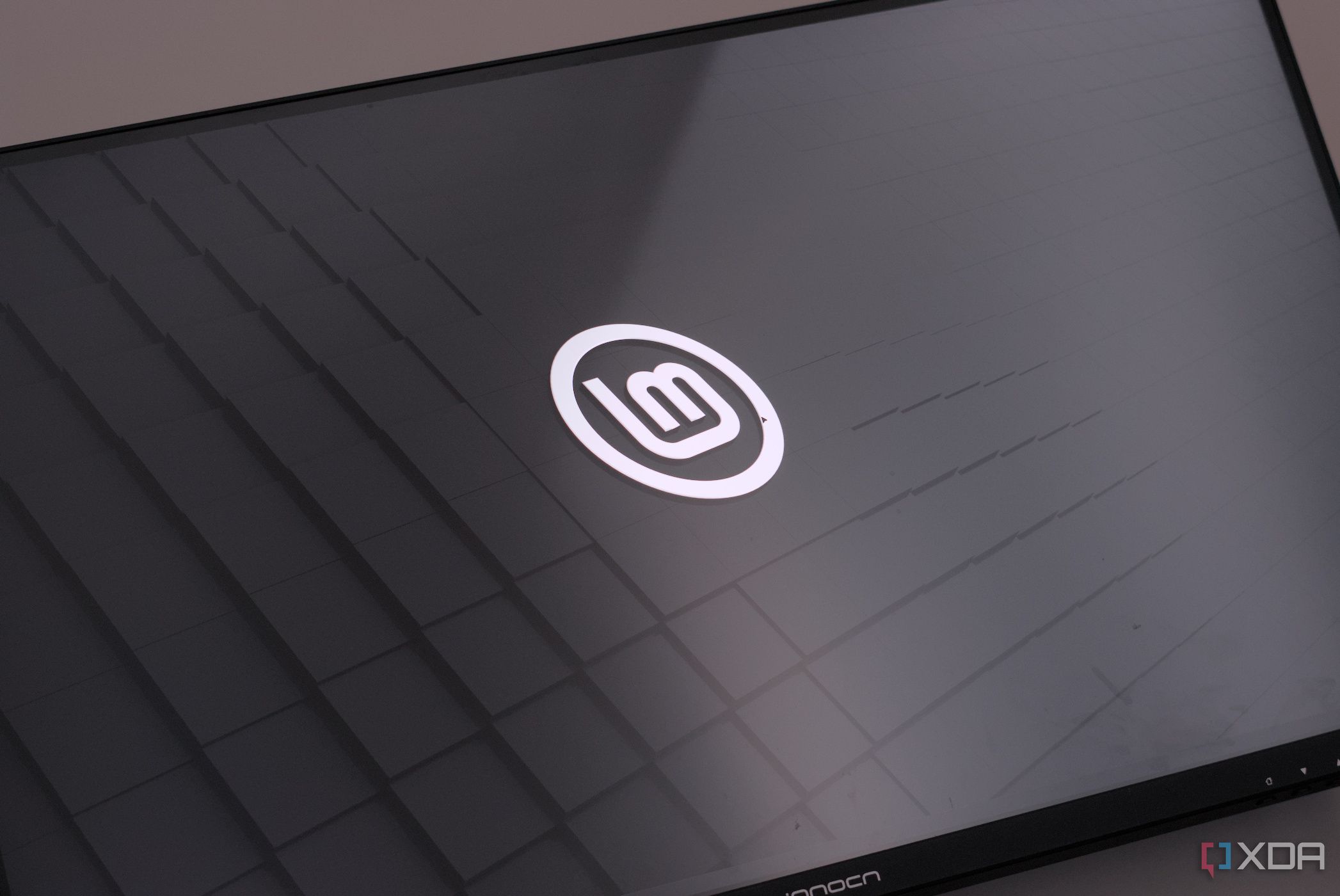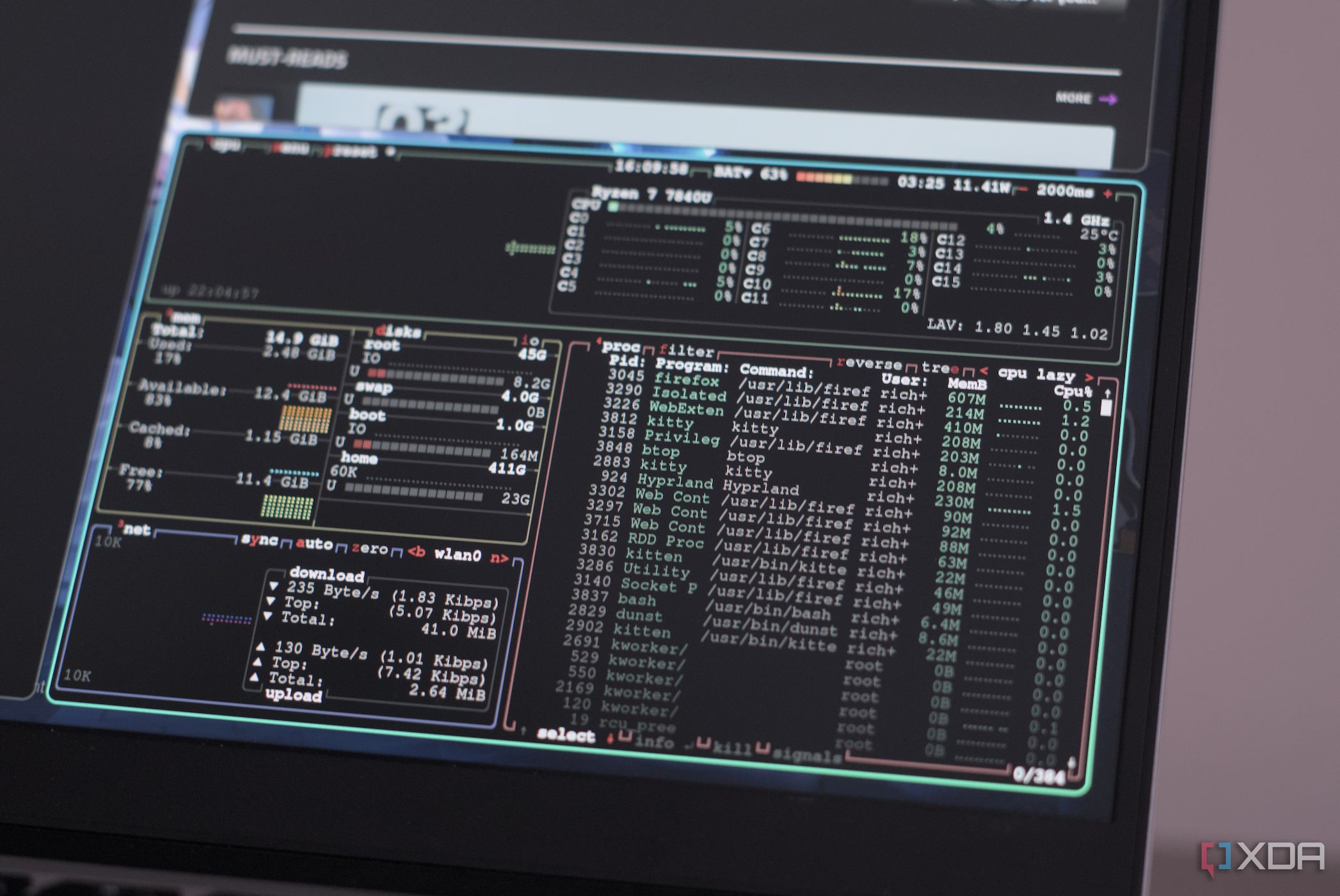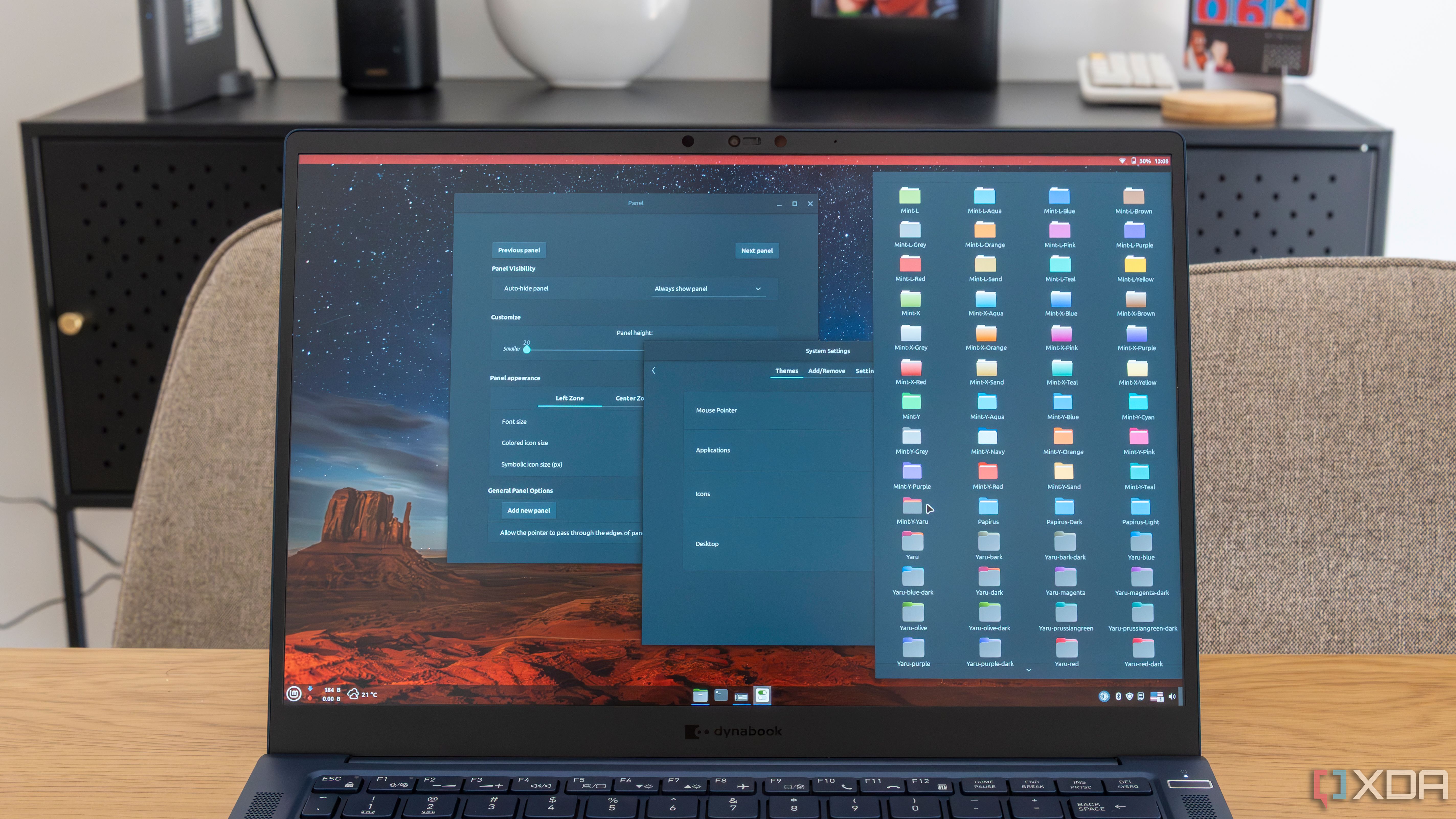Windows Subsystem for Linux (WSL) was released in 2016 as a solution from Microsoft to forego the need to set up a dual-boot configuration with a Linux distro or use virtual machines. It's a better choice than a VM, at least in my experience, though it still falls short compared to dual-booting, but that's mostly due to my needs and how I interact with Linux and Windows. WSL has its place, and I think it's a great addition to the arsenal of tools on Windows, but there are some reasons why I prefer using Linux as a dual-boot instead of through WSL.
4 Performance
Nothing better than bare metal
Running any operating system on top of your hardware is the best way to enjoy the absolute best performance from your system. The same goes for WSL. It's great for running software within Windows, but you'll experience a slight reduction in available performance compared to running the same Linux OS on the hardware in a dual-boot configuration. On systems where I need Windows for some reason, I always use Linux as the primary OS and Windows as a complementary option for specific cases.
When I was using Windows more frequently, I found WSL to be an excellent solution for running Linux within a Windows environment. It offers a compelling option for those who need a pure OS install and not one using some type of overhead, be it a virtualized or emulated environment. As someone who enjoys playing a game or two here and there, particularly on Linux thanks to Proton, I much prefer to use the same OS for running games as well as everything else that may be in the background.
Providing the OS direct access
WSL may be perfect for running basic software and such through Windows, but like many virtualized instances, issues can arise when you attempt to access specific hardware, including your GPU. I found this to be the case with my Windows 11 install with WSL, which takes us back to my point above for performance, requiring a dual-boot install of Linux to enjoy using software and games that can leverage the performance offered by the discrete GPU.
It's important to remember that WSL is a compatibility layer and not a full-blown virtual machine. It won't be able to support hardware passthrough in the same way Hyper-V does.While limited hardware can be made available, I couldn't enjoy direct hardware access for other devices I'd typically find with PCI passthrough in a traditional virtual machine.
2 Linux is more secure
Fewer viruses and vulnerabilities
I'm not suggesting Microsoft's OS is outright bad to use, and you're risking all your data due to viruses and malware. But where Windows does suffer is from privacy concerns, especially from Microsoft and its partners. Have you passed through the Windows installer recently? You have to accept (or decline) page after page of privacy-intrusive features or advertisements for various products and services. Then there's the fact that Windows is simply more popular by a huge margin.
This makes the OS much more susceptible to attacks from malicious parties. A few insecure distros aside, the Linux ecosystem boasts a wide range of security and privacy features. Linux follows a strict user privilege model and forces you to switch to the root user whenever you want to modify the OS directories, services, and other components. While there are vulnerabilities in the Linux code, the attack surface for malware is far smaller on the FOSS OS. As if that’s not enough, Linux distros can be hardened even further using SELinux and AppArmor security modules.

Related
5 reasons you should swap from Windows to Linux
Cant upgrade to Windows 11? Here's 5 reasons why it might be time to swap to Linux
1 I simply prefer using Linux
It's not you, Windows, it's me
Linux has come a long way over recent years. It has always been the OS to customize to your liking, swapping out entire window managers, desktop environments, packagers, and more. No two Linux installations will look the same unless using the same themes, settings, apps, and other underlying features. The same cannot be said for Windows, which has one UI and you'll have to use it whether you love it or loathe it. Linux has a huge array of distros available, each with a different approach and flavor.
Gaming on Linux is better than ever with Proton from Valve. The latest games can be booted with a click of the button within Steam, and more software support is gradually making the switch. Some apps where developers refuse to create Linux versions often have free and open-source alternatives. GIMP is a perfect example, replacing Adobe Photoshop on both Linux and Windows. It's possible to save a lot of money going with free software, though I always recommend throwing some change to the developers as a token of appreciation.
WSL is still great for Linux on Windows
If you find WSL more useful than dealing with dual-boot woes, it can prove an invaluable tool for development on Windows. It's more convenient since you won't have to boot into a separate OS to do everything, as both Linux and Windows will be readily available within the one install. It also frees up your drives from being partitioned and allows for integration between the two operating systems. It's likely the better solution for those who require access to both Linux and Windows libraries and tools, but a dual-boot setup isn't complex and is easier to manage than you may think.
.png)














 English (US) ·
English (US) ·